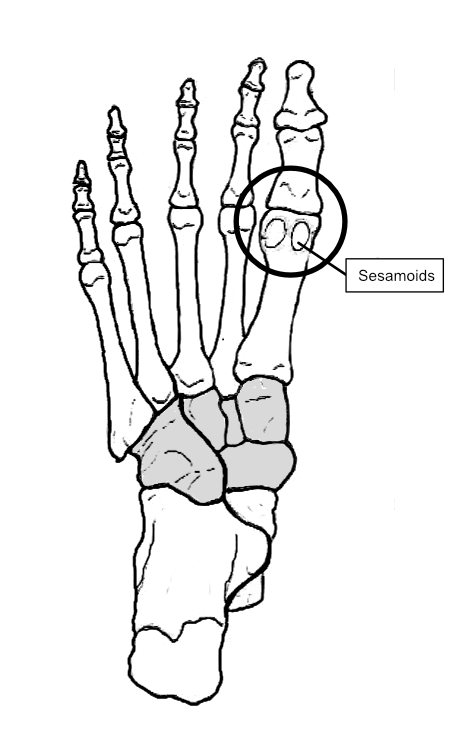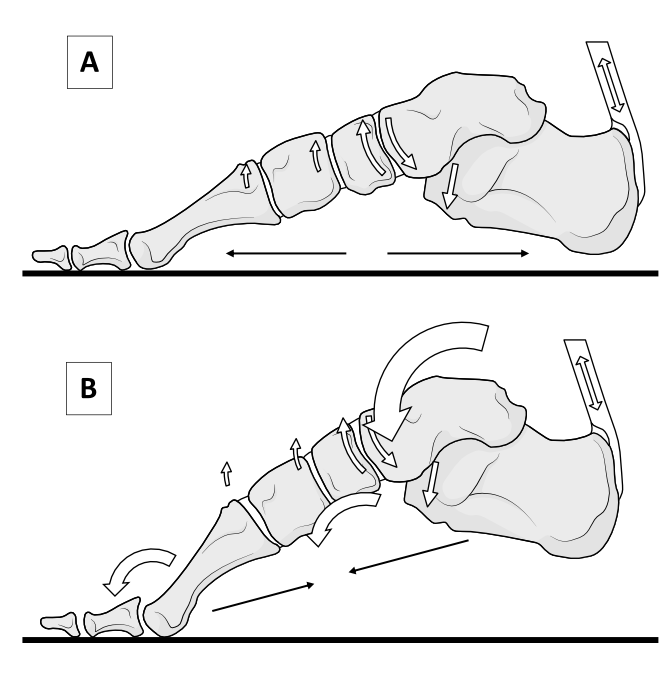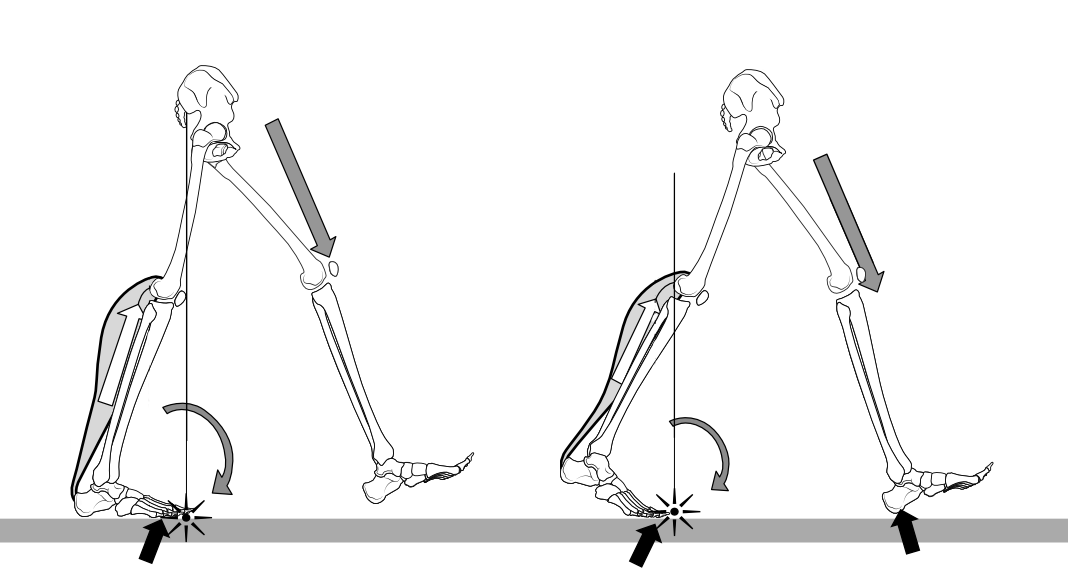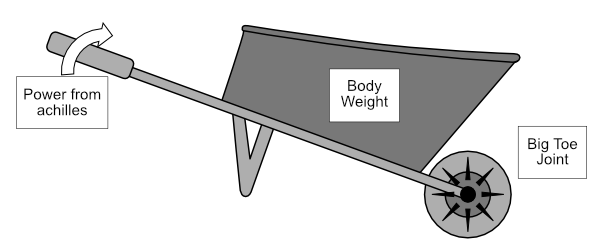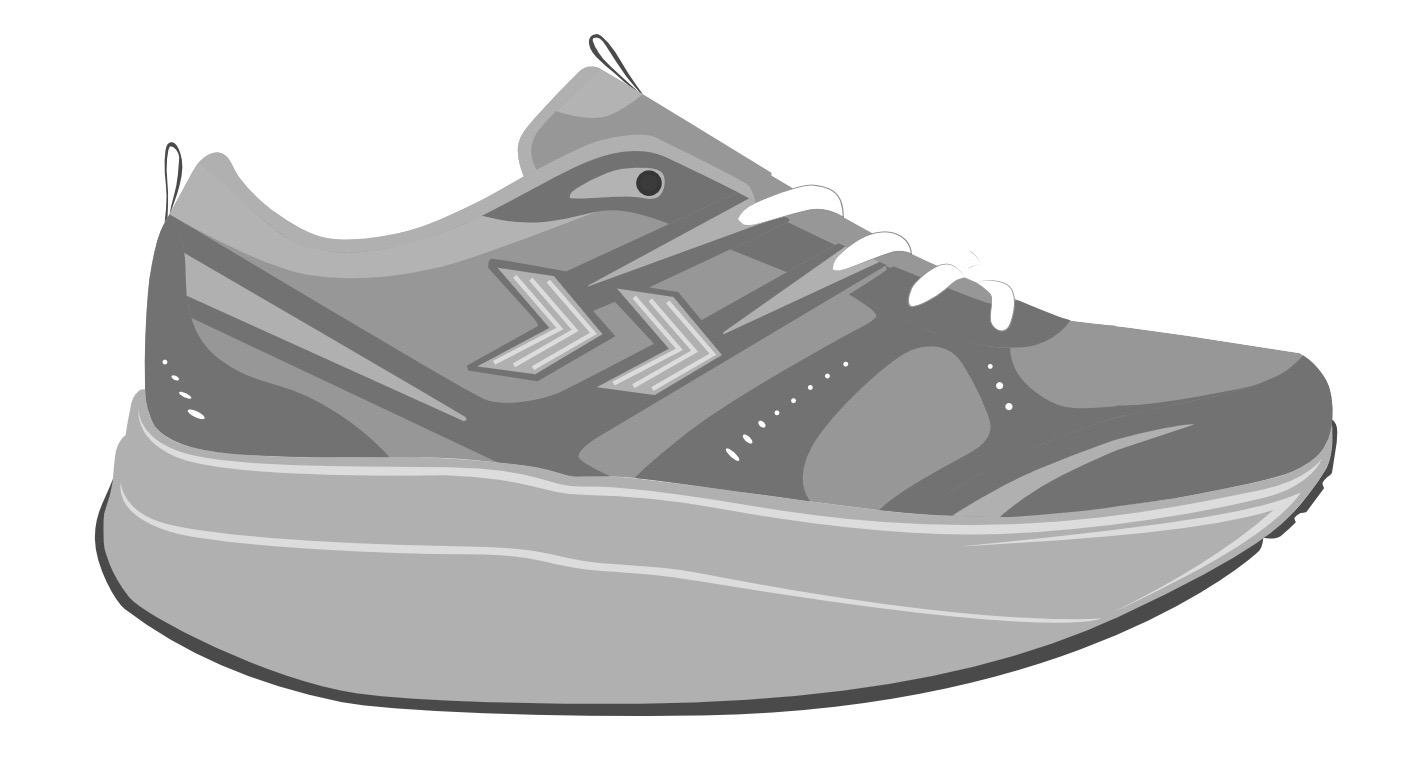Suffering With Pain In The Big Toe Joint
Pain In The Big Toe Joint
There are many causes of pain in the big toe joint, because this joint has quite complex anatomy. Tendons, ligaments, and bones around the joint can all cause symptoms for many different reasons.
However, one of the most common problems is the development of osteoarthritis within the big toe toe. This lies where the big toe joins the forefoot, found between the long 1st metatarsal bone and the shorter proximal phalanx bone of the big toe (see figure 1). Osteoarthritis is a type of degenerative joint disease (DJD). Hence why the insole HealthStep Ltd specifically designed for this condition is called the X-Line DJD.
Figure 1: The location and anatomy of the big toe joint (circled) viewed from the underside of the foot. Note the two sesamoid bones that lie under the big toe. In life, these are sited within two important tendons that help stabilise the big toe.
How Big Toes Work
The big toe joint is supported by muscle that pull the toe upwards and downwards. These are largely separated from those that supply all the little toes and do the same jobs for them. The most powerful muscles are those that pull the big toe downwards. Many of these are connected to two little round bones found under and just proximal to the big toe joint, called sesamoid bones. These help to stabilise the big toe toe as it bends upwards. These can cause pain if they are damaged or become osteoarthritic within their joints with the 1st metatarsal bone. Known as sesamoiditis, this condition is also helped by using the X-line DJD insole.
Big toes primarily work to help stabilise the foreoot on the ground, particularly as the heel lifts off the floor. In this task it works with the other smaller toes, but the two most important toe joints by far are the big toe joint and the second toe joint next to it (see figure 2). They work together to keep the forefoot firmly on the ground as the heel lifts before the opposite heel touches the ground during walking (see figure 3). They keep this task going until its time to lift the big and second toes off the ground for the leg to then swing forward towards its next step.
Figure 2: Image (A) showns the bones of the foot just before heel lift. The foot is at its longest length and flattest profile just before the heel lifts. At lift the heel (B) the toe joints allow the rest of the foot to rotate over them while keeping the forefoot firmly on the floor. The foot can now shorten and the foot arch can raise up.
Figure 3: As the heel starts to lift, the big toe should act like a pivot point to rotate around (left image). This rotation allows the foot and leg above the big toe to rotate forward so that the opposite foot can contact the ground at its heel (right image). Heel lift power comes from the Achilles tendon and calf muscles (shown to be shortening on the back of the calf).
If toes mainly bend upwards, why do we need strong muscles that pull toes downwards?
The answer is simple. These muscles resist the toes being forced upwards by forces being driven against the ground as the foot rotates over the ground, just as the heel lifts up. Having stong muscles that resist the upward force of the ground on the toes, means that the metatarsal bones stays stable as the toe bones effectively bend upwards towards the top of the foot due to the foot rotating over them. Stability from muscles pulling against the toes under the foot means that the toes won’t bend too far upwards after heel lift and ‘bash’ into the long foot bones (metatarsals) that form the base of these joints in the forefoot. The big toe bending upwards also helps stabilise the foot’s arch when the heel lifts off the ground, so this toe bending is particularly important (see figure 3 again). This bending at the toe joints acts as a pivot or fulcrum to rotate the foot around and over as we transfer our weight onto the heel of the next footstep.
This is much like a wheelbarrow tripping out a load (see figure 4). Lifting the handles is like lifting the heel by the Achilles, while the rotation necessary to permit this acts like the toe joints such as the big toe. The load being tipped out of the barrow is equivalent to body weight lying over the foot at heel lift that needs to be tipped forward onto the next step.
Figure 4: Heel lift using the big toe joint has similarities to tipping out a load from a wheelbarrow. The big toe does the wheel’s job rotating the barrow forward and over it to tip out the contents. If the wheel can’t rotate, then its difficult to tip out the body weight and the energy to lift the handles (Achilles power) must become greater.
As a result, the big toe is reliant on a number of important structures to function correctly, including the Achilles tendon, the arch of the foot, and the local big toe joint anatomy, including the sesamoid bones. If anything goes wrong with the big toe joint, changes are required at the hip, knee, ankle, and other foot joints. This can alter gait in ways that are potentially harmful.
My Big Toe Hurts When I Walk/Run
Conditions like gout or a joint infection can cause very severe, hot pain in the big toe joint, but usually such conditions are painful when sitting as well as weightbearing.
Pain or aching that is only present on walking/running is most likely due to osteoarthritis. Quite often and particularly at first, this starts to ‘come on’ after some extended exercise. In time, even a little exercise can bring aching on.
Osteoarthritis (osteoarthrosis or degenerative joint disease is the same condition) is caused by the specialised tissues (cartilage) in the joints that permit free joint motion starting to wear away at the joint’s surfaces. The joint surface tissue is called articular (or hyaline) cartilage, and its amazing stuff that uses a special structural arrangement of soft tissue and internal fluid pressures to avoid friction forces under high compression stresses. However, the tissue is so specialised that it only takes a little damage to cause the motion to starts to be affected. It is also very poor at healing, so once significantly damaged, joint motion wiil be forever compromised.
In time, the joint thickens with lumps of bone forming around the edges and the cartilage sitting between the bones becomes less, allowing the bone ends to move together. The joint motion gradually becomes less and motion may be totally lost in some cases. As it loses motion the pain gets worse, although once all motion is lost, pain often moves elsewhere within the foot or lower limb as a result of changes in walking and running style that result.
What Can I Do About My Big Toe Pain?
Surgery is one option, but only fusion of the joint or a replacement joint can be offered as a long term solution. Sometimes trimming bone lumps away from the edges of the joint can relieve the pain for a bit, but the relief is usually temporary. Joint replacements have variable success, but are not as good as hip or knee replacements. Fusion (fixing the joint stiff) tends to sort out the big toe pain, but loss of this important joint motion can affect the ability to walk or run comfortably.
The earlier you start treatment for osteoarthritis and the less joint damage when treatment starts, the better the situation and also the better chance that surgery won’t be necessary.
For big toe osteoarthritis try these exercises to strengthen the muscles under the foot that protect the big toe joint:
Foot Therapy Ball – Simple exercises to help strengthen your feet
Toe Motion Exercise – An easy three-step exercise to help strengthen your feet
Heel Raise / Calf and Foot Strengthening
If the big toe joint still has lots of motion in it try these insoles: X-line standard or RIF
If the big toe is painful and your foot seems to be rolling inwards more that it used to try the X-Line TPD50
If the big toe joint is not very stiff (compare it to your other non-painful big toe or someone young and healthy big toe motions), then the DJD insole will be best.
Be aware that the X-Line DJD requires a lot of shoe space and works best in a stiff soled shoe that does not bend at the toe joints. Hiking shoes are often very good.
Shoes with a rocker type sole like this, are also very helpful (see figure 5).
Figure 5: A shoe with a stiffer rocker shole can make walking with a stiff big toe joint much easier, especially if fitted with a DJD insole.

